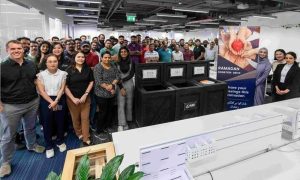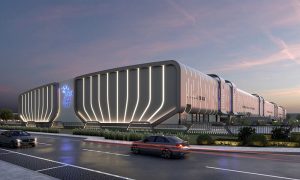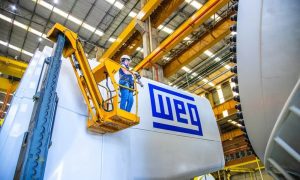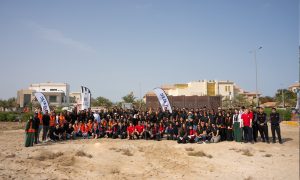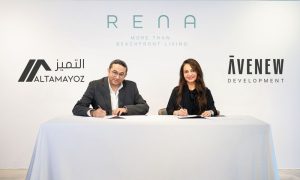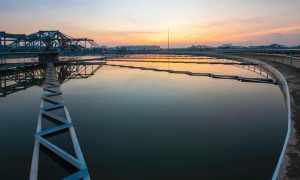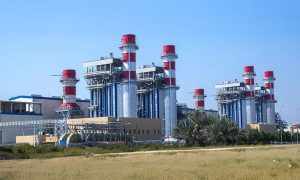Road to Recovery
Industry professionals say lessons learnt from the boom and bust of the MENA construction sectors have paved the way for better health in the New Year and reveal some of the most lucrative markets to tap in 2011, at home and abroad. Louise Birchall reports

The outlook for the New Year is a promising one, with many construction firms eyeing emerging regional and international markets to identify opportunities in 2011.
Furthermore, construction costs are estimated to be lower than in 2007, which is expected to fuel recovery in the sector. But perhaps the most important improvement in 2011 is clients, contractors, developers, consultants, designers and many others will be starting the New Year having learned some valuable lessons during the global financial downturn.
Learning curve
“Firms are realising they must go back to fundamentals, they need sound business planning, risk management and project development. This wasn’t being done sufficiently before the crisis, which is reflected in studies of costs versus returns,” explains Turner Arabia general manager Husein Odeh.
A lack of fundamentals in the construction process is attributed as one of the reasons for project failure. Many projects that started during the boom period in the UAE did so with uncertainties, such as unapproved funding, unissued permits and a lack of organisation, structure or management in place.
“During the boom years, anyone with money thought they could be a developer. Many development firms in the region were created out of nothing, with employees unsure of what the role involved. Therefore decisions were left until later stages, market research wasn’t conducted and over- and under-building in some sectors was common,” recalls Odeh. “To have a successful project, developers must understand that decisions make the highest impact early in the process. The later you wish to make changes, the more costly they will be.”
Furthermore, priorities and long-terms goals were often unclear. Objectives were not set out for designers, few feasibility studies took place and often the designers would have to guess what the developer wanted.
“To enter the market, consultants would charge very low prices, but with these came limited and very basic services. Due to this, the designer would be expected to do everything, the design process was often rushed and quality compromised. Meanwhile, developers didn’t have the experience to recognise the situation,” says Odeh.
Suggesting that only five-10% of project costs come from the design and construction phases, while the rest is accumulated during the operation and maintenance of the project, Odeh says owners have also learnt the importance of costing a project for its entire life cycle, which was not always the case during the boom when owners were building to sell.
Operations manager for Brookfield Multiplex, a facilities management firm, Stewart Johnson has also recognised this trend.
“The demand for facilities management services can in part be attributed to an increased awareness of environmental issues. “In addition, many new projects must adhere to environmentally-friendly design aspects, which over time will become more viable and cost effective,” he explains.
Increased demand for cost-effective maintenance and operation services has allowed Brookfield Multiplex to identify new markets in the Middle East and Asia for expansion in 2011 and beyond.
Market opportunities
Clients and contractors now realise the significance of time and value budgeting for effective cost control”
It is not only the developers who have learned from the boom and bust period and many other product and service suppliers have been able to base expansion plans on increased awareness of crucial products and services needed to facilitate a smooth construction process.
“Contractors have learnt over the last few years that insufficient monitoring of project processes leads to uncertainties. The economic downturn forced clients and contractors to realise the significance of time and value budgeting as a basis for effective cost control and decision making. Ultimately, it is informed and timely decisions that minimise loss and risk in this challenging environment,” explains CCS Group general manager Ian Hauptfleish.
The firm supplies technology products offering construction managers the tools they need to control cash effectively by keeping tendering, procurement and construction project variables under strict control.
The change in attitudes of clients and contractors has led to an increase in demand for such products, according to Hauptfleisch.
“We’ve recently set up our first product distribution office in India, where we have already secured some prominent clients, including Larson and Toubro. The Middle East and North Africa still hold immense potential, particularly Saudi Arabia, Lebanon and Jordan, which are all experiencing increased construction activity,” he observes.
As a result, the firm has also established a distribution office in Bahrain to assist with installations of its products outside of the UAE and it is planning to open a satellite office in Abu Dhabi, identified by CCS as another lucrative market.
Similarly, Keller Group general manager Shad Khan predicts that the future of the Middle East’s construction industry is “computerised and sustainable”.
“Labour-orientated processes will be replaced with computerised quality control monitoring and there will be a reduction in projects that require a large quantity of cement and steel,” he says.
The company employs around 300 personnel in the Middle East and currently has expansion plans for Kuwait.
“Strong sales growth in the region indicate operations will go from strength to strength. In 2008, sales were split 50:50 between piling and ground- improvement projects, with ground improvements since growing to a 75% share of sales,” adds Khan.
Branching out
[facts]
Brazil Housing Market
6.3m
Brazil has a huge housing deficit of 6.3 million, which the governmentis said to be “pouring money into”
[/facts]
On the other hand, most construction firms have seen a drop in some of their key markets, which has driven them to identify new and emerging construction industries with business potential.
Many are still focused on the Middle East and North Africa regions, with India cropping up as a strong contender for the New Year as well.
“Libya is booming, we believe this will be a big market that has a lot of money and is currently underdeveloped. The demand is also there in Egypt,” says Odeh.
Shell general manager Amr Adel says “the Middle East remains an exciting region for Shell’, while door manufacturer Tenglong global business development manager Ronald Thai says “though the economy is slower in the region, the Middle East continues to be our biggest market”.
Zamil Air Conditioners provides solutions to more than 55 countries worldwide and employs around 3000. CEO Osama Bunyan adds: “We’re looking at expanding into new markets from a profitable growth perspective. Interestingly there are select exports markets we’re currently looking at, namely Egypt, Iraq, India, Sudan and other African markets. These all offer tremendous growth potential.”
Likewise, electric and diesel- driven high-performance rotary screw air compressor manufacturer Sullivan Palatek has identified some key African markets for expansion in 2011.
“The GCC industry demand and growth have been strong and the company looks forward to moving into Africa in the New Year, particularly in the North, including Egypt, Syria and Algeria.
Meanwhile, cable manufacturer Ducab is eyeing a 20% market share in the GCC in the near future. The firm currently has a 50% market share in the UAE, with three cable manufacturing factories, a copper rod plant and a PVC compounding facility in the emirates, and a sales network spreading across the Middle East, Europe, Asia and Africa.
“To meet the growing demands of customers, we will continue to expand our factories and sales office networks in the Middle East, North Africa and India, as well as Europe,” asserts marketing manager Ashish Chaturvedy.
Wolfkrann international marketing manager Alison Gustavsson adds that market development in the Gulf region has “enormous potential”, from Saudi Arabia, Africa, Iran, Iraq through to India, explaining that it is essential to identify major projects in these areas. The tower cranes supplier is currently involved in the Princess Noura Bin AbdulRahman University for Women project in Saudi Arabia.
KSA calling
In fact, many construction-based companies are expected to flock to Saudi Arabia in the New Year to take advantage of numerous project opportunities, not least those in the education sector.
“The costs are down, the materials and equipment are available and the labourers are already there,” says Odeh.
While the private sector is suffering in Saudi Arabia, the government is injecting billions of dollars into projects and as much as 50% of its budget has been allocated to the education sector, followed by the health-care sector, which accounts for 17%.
However, the government is only investing 7% of its budget into housing, most of which will be for low-cost accommodation.
“We believe the private sector should focus on housing, it’s an area of opportunity because the government is not focused on these projects. Once the banks start lending again, the private sector should focus on building housing for the middle class in KSA,” reveals Odeh.
But when will the banks start lending? Odeh tells The Big Project he predicts this will happen midnext year, though it may be at a slow pace.
Formwork supplier RMD Kwikform managing director Paul Williams adds: “The building sector fell off sharply across the region during the global financial crisis. There are indications that market conditions are improving, but we are not expecting any significant improvement over the short term, except in KSA.”
Furthermore, Saudi Arabia appears to be leading by example in the sustainable construction arena. Solar Plant constructor Environmena claims to be “keeping it’s ear to the ground” across the region as Gulf countries publicly express interest in renewable energy and solar power programmes.
“It appears that Abu Dhabi and Saudi Arabia are leading the way in respect to announced programmes and enacted policies,” says VP — technical Sander Trestain.
Additionally, he says there is considerable momentum in North African countries, such as Morocco, Tunisia and Algeria, which are pursuing both solar and wind-based power programmes.
“It should be noted, however, that in all of these markets, the solar and renewable energy initiatives are still quite new, and there is a substantial amount of policy and funding development still required.
But recognising KSA’s widespread potential across different construction project sectors, Emirates Glass vice president of sales and marketing Ziad Yazbeck has dubbed the GCC country as “the next big market” in the region.
Meanwhile, Arminox Gulf general manager Torben Krebs says “Saudi Arabia represents the biggest potential” for the steel-strengthening firm.
However, understanding the importance of diversity, Arminox is also establishing a production facility in Qatar, looking into opportunities in Kuwait and has recently set up a company in the US.
China’s GDP is growing by more than 9% every year. Construction expenditure was $4.4 billion in 2010 and is expected to increase by 11% annually”
Global growth
The company is not alone in looking outside the region for lucrative markets in 2011.
While many European countries are still demonstrating negative growth, Odeh signposts Asia (except Japan) as the “strongest growth area” globally between the years 2011 and 2014.
Meanwhile, he identifies China and Brazil as key emerging markets.
“China’s GDP is growing by more than 9% every year. Construction expenditure was $4.4 billion in 2010 and is expected to increase by 11% annually. By 2014, expenditure is forecast to reach $730 billion,” he asserts.
Krebs reveals Arminox is planning future expansion into China as well.
“Brazil is also increasing construction expenditure by 9% annually between 2010 and 2014 and the planned FIFA World Cup and Olympic Games means there will be a lot of government funding into developing sports facilities and infrastructure.
In addition to this, Brazil has a 6.3 million housing deficit, which the authorities are pouring money into. There will also be many opportunities across speciality projects including hospitals, airports and high-rise buildings.
Odeh reveals that Turner is exploring emerging markets in Asia, Turkey, Central America, the Caribbean and Eastern Europe, but doesn’t plan to move its operations from the Middle East.
“The region is still attractive in terms of innovation and construction,” concludes Hyder Consulting’s regional director Stephen Oehme.
FAQs: Setting up a business in KSA foriegn investment Ksa
Foreign Investment
-Non-saudis are permitted to invest in the Kingdom in minority, majority or 100% foreign-owned ventures, according to the Foreign Investment Act (FIA)
-They may not invest in oil exploration, drilling and production, real estate brokerage or land and air transport
-The FIA includes guarantees on the free repatriation of profits and capital
-It offers the right to buy property and allows ventures to sponsor their own employees in the country
-The FIA also established the Saudi Arabian general Investment Authority, a one-stop-shop to facilitate the investment process
-The government is commited to maintaining the convertibility of the riyal, there are no significant restrictions on the inward or outward movement of funds by individuals or firms
-However, the Saudi Arabian Monetary Authority closely monitors foreign exchange transactions to deter speculation, fraud and money laundering cHoice oF Business entity
-The Regulations for Companies governs company formation and operation
-The eight possible forms of business organisation are the general partnership, limited partnership, partnership limited by shares, limited liability partnership (or company), company with variable capital, joint stock company, cooperative company and joint venture company
-In practice, the limited liability company is the most appropriate form of incorporation available to foreign investors
